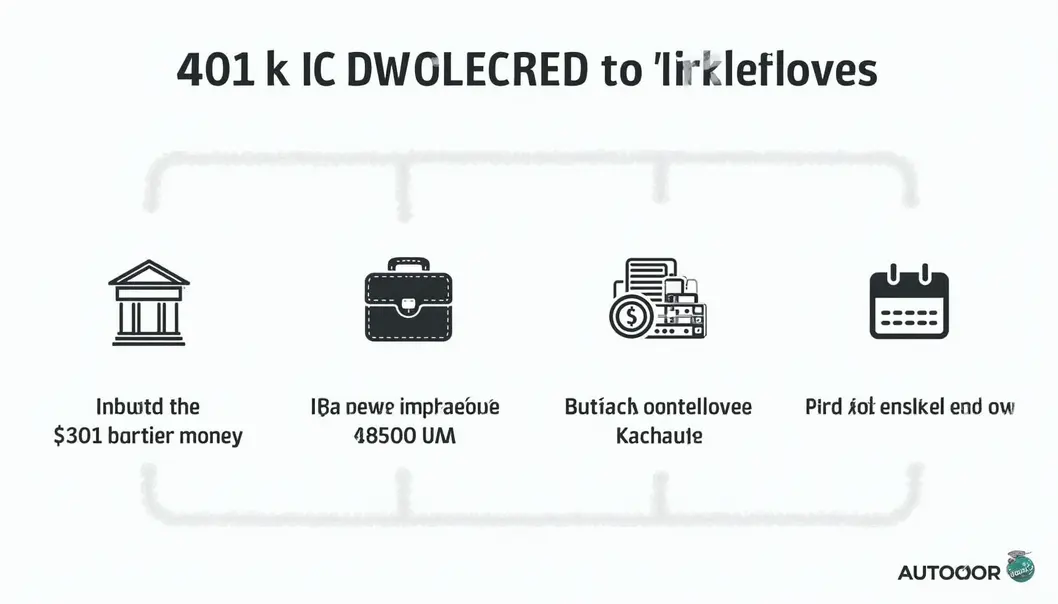As you transition between jobs, decisions about your 401(k) can significantly impact your financial future. Handling an old employer’s 401(k) might feel daunting, but understanding your options will empower you to make informed choices that align with your long-term retirement goals. Every decision—be it leaving your funds where they are, rolling over to a new employer’s plan, converting to an IRA, or even cashing out—carries different implications for your retirement savings. This guide will help clarify these choices, detailing the benefits and potential drawbacks of each option to ensure you maintain control over your financial wellbeing and retirement strategy.
Navigating Your 401(k) Options After Leaving an Employer: A Step-by-Step Guide
When you part ways with your employer, one of the crucial decisions you must make involves your old 401(k) plan. A thoughtful approach to handling this retirement account can significantly impact your financial future. This chapter serves to guide you through the various options available and the essential processes involved in making the best choice for your retirement planning.
Understanding Your 401(k) Options
In the landscape of retirement savings, you generally have four primary options when it comes to your old employer’s 401(k). Each choice carries its own set of benefits and drawbacks, allowing you to tailor your approach based on your personal financial situation.
Option 1: Leave Your Money in the Old Employer’s Plan
Leaving your funds with your former employer is a viable option, especially if the plan offers solid investment choices. This can be the easiest approach as it requires minimal action on your part. However, it’s essential to consider potential limitations, such as fewer investment options and possibly higher fees compared to other accounts. Moreover, managing multiple accounts can become unwieldy, complicating your overall financial strategy.
Option 2: Roll Over to a New Employer’s 401(k) Plan
If your new job includes a 401(k) plan and you’re eligible, this can be a smart move. Rolling over your old 401(k) into your new plan consolidates your retirement savings, making it easier to track your investments. Ensure to request a direct rollover to avoid any tax implications. This method allows the funds to transfer directly from your old plan to the new one without you touching the money, thus maintaining its tax-advantaged status.
Option 3: Roll Over into an IRA
Rolling over into an Individual Retirement Account (IRA) presents another beneficial avenue. A traditional IRA allows tax-deferred growth, while a Roth IRA enables tax-free growth. This flexibility often provides access to a broader array of investment options, which can be advantageous for your portfolio’s growth over time. Similar to rolling over to a new employer’s plan, a direct rollover is recommended here to sidestep tax penalties.
Option 4: Cash Out Your 401(k)
Though cashing out your 401(k) might seem inviting for immediate liquidity, this option typically results in steep penalties. If you’re under 59 ½ years old, you would incur a 10% early withdrawal penalty in addition to ordinary income taxes. Moreover, this choice diminishes your retirement savings and halts any potential tax-advantaged growth, severely impairing your long-term wealth accumulation.
The Rollover Process: A Step-by-Step Approach
Understanding the rollover process is essential, guiding your actions smoothly and efficiently. Here’s how you can handle your 401(k) rollover:
-
Select the Right Account: Determine whether you want to roll over your funds into a new employer’s 401(k) plan or an IRA. Consider factors such as investment options, fees, and how each aligns with your financial goals.
-
Contact Your Plan Providers: Once you have chosen your destination account, reach out first to your new plan provider to notify them of your incoming rollover. They will guide you through their process, ensuring everything is set for a smooth transition. Next, contact your former employer’s plan administrator. They will provide you with the necessary forms and directions on how to initiate the rollover.
-
Choosing Direct vs. Indirect Rollover: Opt for a direct rollover whenever possible; this involves transferring funds directly from your old 401(k) to the new account without you receiving the cash. It is tax-efficient and mitigates any risk of penalties. An indirect rollover may grant temporary access to your funds, but be aware you must deposit them into the new account within 60 days to avoid incurring taxes and penalties.
-
Invest Accordingly: After your funds arrive in the new account, allocate them based on your financial strategy. Reassess your risk tolerance and retirement timeline to ensure your investment choices align with your long-term objectives.
-
Consider a Roth Conversion: Should you opt for a Roth IRA, remember that taxes will be due on the rollover amount. However, this may be advantageous if you expect to be in a higher tax bracket upon retirement or wish to enjoy tax-free withdrawals in the future.
Additional Considerations
As you navigate the world of 401(k) rollovers, keep some key considerations in mind. First, analyze the fees associated with both your old and new accounts. Often, IRAs present lower fees compared to traditional 401(k) plans, which can enhance your savings over time.
Investment flexibility is another crucial aspect. IRAs often provide a broader selection of investment vehicles, including stocks, bonds, and mutual funds, allowing for a more tailored investment strategy.
Lastly, maintaining organized documentation throughout the rollover process is imperative. Prepare to keep essential information, such as account numbers and recent statements, accessible as you coordinate between different plan providers. Understanding these details will help ensure a seamless transition without unnecessary delays.
In conclusion, the best route to take with your old 401(k) depends on your unique financial situation, investment goals, and personal preferences. Engaging with a financial advisor can also provide valuable insights tailored to your needs, ultimately empowering you to make decisions that support your wealth-building journey into retirement.
Final thoughts
Navigating through your options for managing an old employer’s 401(k) can enhance your financial strategy significantly. By understanding and selecting the best path for your retirement savings, you leverage your financial future. Remember that timely action and informed decision-making will safeguard and potentially grow your nest egg for the years to come.
Start making informed decisions about your retirement today by exploring your 401(k) options with confidence!
Learn more: https://savemawallet.com
About us
Try our budgeting tools to help manage your finances effectively and make informed decisions about your retirement savings.


Leave a Reply
You must be logged in to post a comment.